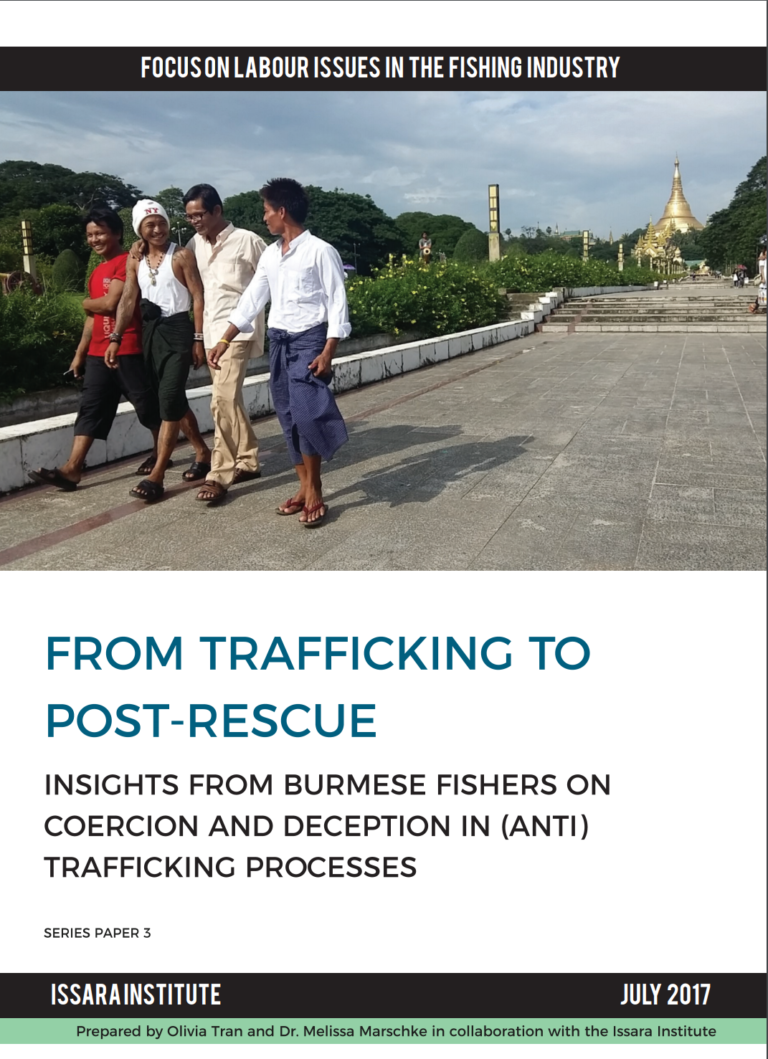Educators and Human Trafficking: In-Depth Review
GuidanceA resource specifically for educators and school-based professionals to help recognize, respond, and prevent human trafficking in an educational context.
This paper focuses on the experiences of Burnese men who, having been trafficked into Thailand’s offshore fishing industry, are in the process of reintegrating into Burmese society. Discussions with 15 of these men highlight how they were coerced or deceived throughout phases of their experience, from recruitment to post-rescue. While the men corroborated accounts of deception and abuse on Thai fishing vessels that have been widely reported by the media and non-governmental organizations, in-depth interviews reveal other forms of deception and coercion by anti-trafficking actors. This raises serious questions for assistance providers about the protection and reintegration of trafficked persons and highlights why it is imperative that the international community, including businesses, NGOs, and governments, pay more attention to reintegration efforts and supporting these men to rebuild their lives. Recommendations to support these men include: rethinking appropriate and more empowering assistance; providing financial compensation; and strengthening engagement of the private sector in reinterpretation activities.

A resource specifically for educators and school-based professionals to help recognize, respond, and prevent human trafficking in an educational context.
The guidelines aim to improve global supply chain governance, due diligence and remediation processes to advance the progressive elimination of child labour. The Child Labour Guidance Tool was created jointly by the International Labour Organization...Read More
The progressive responses by some businesses to the Black Lives Matter protests, and the systemic racism they are calling attention to, have been framed as voluntary commitments of socially conscious companies. In fact, all businesses have an ironcl...Read More
With the persistent reality of COVID-19 virus resurgence, our nation’s policymakers have turned their attention to making investments that strengthen the resilience of our families, communities, and the national infrastructure in the face of inevi...Read More